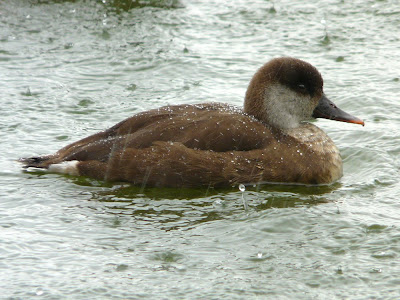If you come across a couple of Whooper Swans Cygnus cygnus at the Tring Reservoirs complex don't get too excited, as chances are they are the feral pair that have visited the area periodically for the last three years. I am not sure of the exact provenance of these two birds, but they may have originated from a private collection in Bedfordshire. The photos below were taken on a dull, grey day in September 2008, but I saw what are probably the same birds a few days ago at Wilstone Reservoir. The pair were engaged in a raucous greeting or bonding display with entailed a lot of neck bending and stretching accompanied by loud honking and trumpeting. Wherever they come from it's good to have these elegant swans around for a few days and to hear their evocative calls echoing across the water, like the first breath of Winter.

Whooper Swan Cygnus cygnus. Wilstone Reservoir 06/09/2008

Whooper Swan Cygnus cygnus. Wilstone Reservoir 06/09/2008

Whooper Swan Cygnus cygnus. Wilstone Reservoir 06/09/2008






































